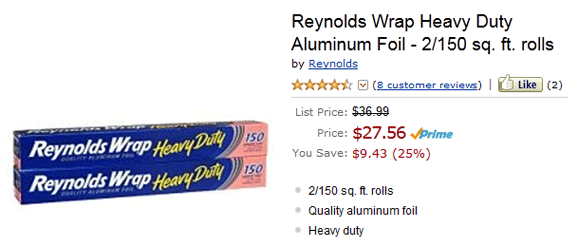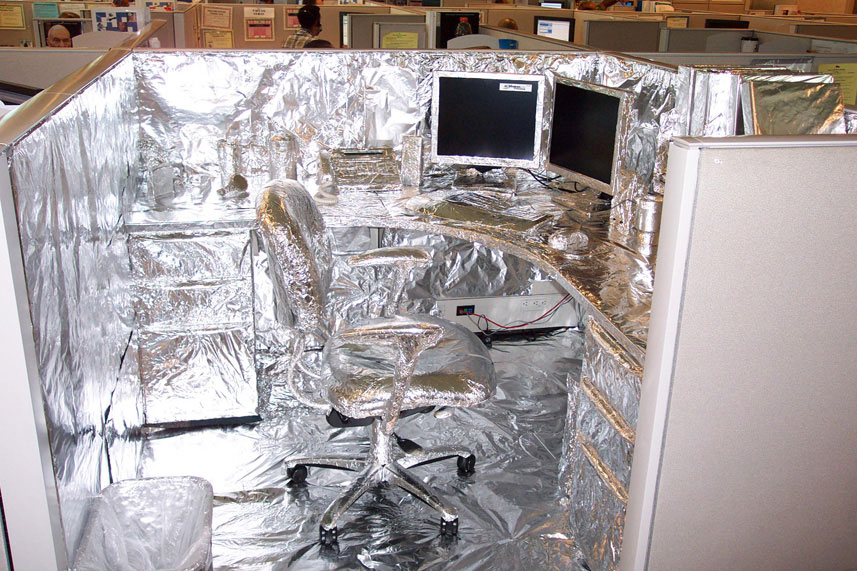- How much does it cost to cover this classroom in aluminum foil?
- What is a guess that is too low?
- What is a guess that is too high?
- What is your best guess?
- What shape are the objects in your section?
- How do you determine how much aluminum foil you will need to cover that shape?
There are many ways this problem could be implemented. You could have students roam around the classroom and each come up with their own separate estimate. Alternatively you could divide the classroom into sections (perhaps with painter’s tape) and assign several students to each section with the goal of determining how much aluminum foil would be needed to cover their section.
Note that one assumption that should be made is that no aluminum foil overlap will be necessary.
The Common Core State Standards specifically reference that students should be able to find the surface area of rectangular and triangular prisms. As such, you may need to place various objects around the room to provide a diverse set of objects to measure. Your classroom is most likely full of rectangular prisms but may be missing triangular prisms. Examples of triangular prisms include:
- empty and closed three-ring binders
- Toblerone chocolate boxes
- Folded and taped paper (when all else fails)
Finding the surface area of cylinders is not specifically mentioned in the Common Core State Standards but that would be another useful object to find the surface area of.
Once each of the groups has determined what objects they have in their section, the next step will be to find each object’s surface area. That will take some time as well as rulers and/or tape measures. You can reduce the amount of time this takes by:
- Limiting the portion of the classroom students measure and having each section be smaller
- Setting restrictions as to what each group should measure (for example, not every cord or paper clip)
- Limiting each section to covering a specific number of items.
Eventually you want all the groups to either combine their data or come up with their own total surface area. It may be beneficial for each group to present one or two of their favorite objects and how they calculated the foil needed to cover it.
Using this information and the cost of the heavy duty aluminum foil, calculate the total cost. Note that it is $27.56 for two rolls of 150 square feet each. That gives a unit rate of approximately 9.3 cents per square foot.
- Cost of aluminum foil:

- Example of a fully covered cubicle:

- CCSS 6.G.4 Represent three-dimensional figures using nets made up of rectangles and triangles, and use the nets to find the surface area of these figures. Apply these techniques in the context of solving real-world and mathematical problems.
- CCSS 6.RP.2 – Understand the concept of a unit rate a/b associated with a ratio a:b with b ≠ 0, and use rate language in the context of a ratio relationship. For example, “This recipe has a ratio of 3 cups of flour to 4 cups of sugar, so there is 3/4 cup of flour for each cup of sugar.” “We paid $75 for 15 hamburgers, which is a rate of $5 per hamburger.”
- CCSS 6.RP.3 – Use ratio and rate reasoning to solve real-world and mathematical problems, e.g., by reasoning about tables of equivalent ratios, tape diagrams, double number line diagrams, or equations.
- CCSS 7.G.6 Solve real-world and mathematical problems involving area, volume and surface area of two- and three-dimensional objects composed of triangles, quadrilaterals, polygons, cubes, and right prisms.
- CCSS G-MG.1 Use geometric shapes, their measures, and their properties to describe objects (e.g., modeling a tree trunk or a human torso as a cylinder).



5 Comments